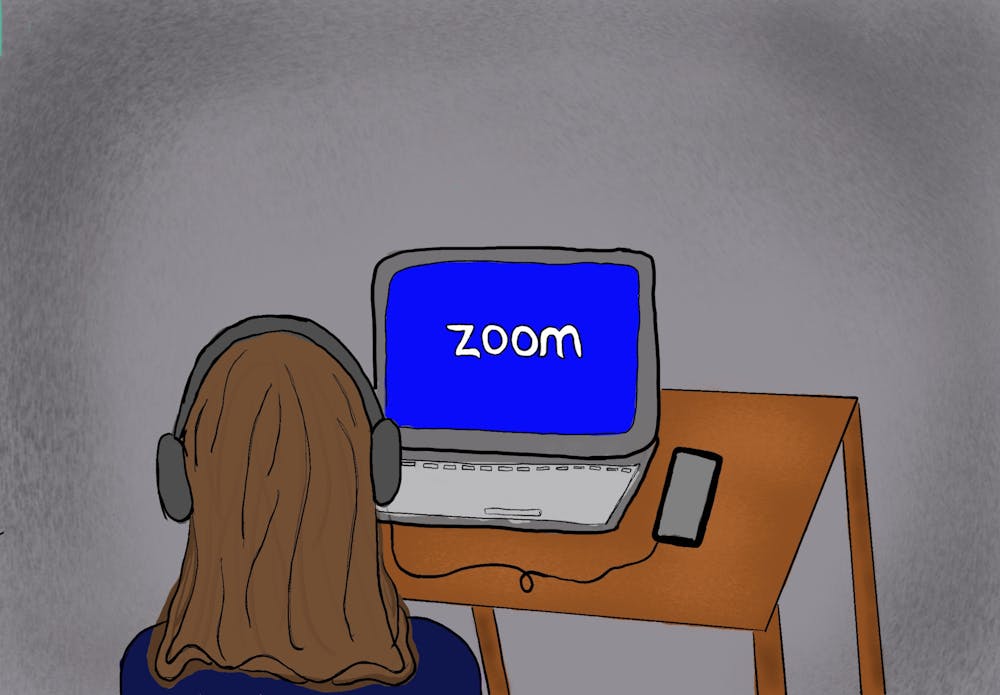Schools moved classes online throughout the pandemic, so online class is something that has become painfully familiar to students of this generation. Like other institutions, the University relied heavily on this format during the pandemic. However, the University's use of online classes has outlasted the pandemic, with some classes remaining exclusively online. It seems that, in the University’s eyes, a student’s experience in an online class is just as valuable as one in person — after all, the two types of classes carry the same credit value. The University’s reliance on online classes as an equally effective alternative to in-person classes ignores the sheer disparity in learning experience between the two. In light of this reality, the University must stop offering online asynchronous classes to full-time, in-person undergraduate students.
Some of the University’s online offerings are geared toward non-traditional educational pathways, but others are standard undergraduate courses. The two most well-known, and perhaps notorious examples are of COMM 2010 and COMM 2020. These courses are prerequisites for students applying to the McIntire School of Commerce and are taken by thousands of undergraduates in the college each year. However, the University charges the same tuition irrespective of whether or not a student takes online or in-person classes. On average, an in-state undergraduate student in the College pays around $38,000 per semester. An out-of-state student can expect to pay closer to $77,000 on the high end. For these exorbitant prices, it is expected that students are getting access only to the highest quality of education.
But this is not what happens. Online classes are inherently fraught with problems — they decrease levels of student engagement and increase levels of academic dishonesty, making the online experience something fundamentally different from traditional in-person school. Moreover, as class sizes increase, students' performance decreases. The most popular undergraduate online-only courses, the aforementioned COMM 2010 and 2020, cap their enrollment at 400 and 800 students respectively. At this size, any semblance to the traditional classroom experience that students are paying for is unimaginable. The academic experiences parallels that of a webinar, rather than the face to face learning in lecture halls or small group discussions that many students are familiar with and able to participate in.
In such large, impersonal environments, connecting with professors can be very difficult. Even if students reached out to their teachers, the highly imbalanced student-to-faculty ratio makes this a less than viable option for prompt response or assistance with the course material. Many of these online courses also do not have TAs or other, more individualized resources of academic assistance. This, in combination with the fact that these classes are asynchronous, makes the task of developing some form of personal engagement with the subject matter utterly insurmountable.
Beyond the struggles to connect with teachers and academic resources in the online experience, the University’s approach to online classes raises questions of inequity. Student success in massive online classes, such as COMM 2010 and 2020, have been shown to skew heavily along socioeconomic lines. In online and asynchronous classes, success is often determined by one's ability to advocate for themselves — to know when and how to ask for help, and to be comfortable with doing so independently. At smaller, often private, high schools where students receive more individual attention, skills concerning self-advocacy are baked into the curriculum. These skills give students from a higher socioeconomic background more tools for success in online and asynchronous classes than students of a lower socioeconomic background.
The University attempts to justify this practice as pedagogically comparable to the in-person experience in order to offer online courses to as many students as possible. However, because students’ experiences in online asynchronous classes are so different and subpart, the University must consider doing away with these classes entirely. Our tuition pays for world-class faculty and facilities. How can an online class — that requires neither — be seen as providing the same experience as an in-person one that does?
George Quillen is an opinion columnist who writes about economics, business and housing for The Cavalier Daily. He can be reached at opinion@cavalierdaily.com.
The opinions expressed in this column are not necessarily those of The Cavalier Daily. Columns represent the views of the authors alone.







